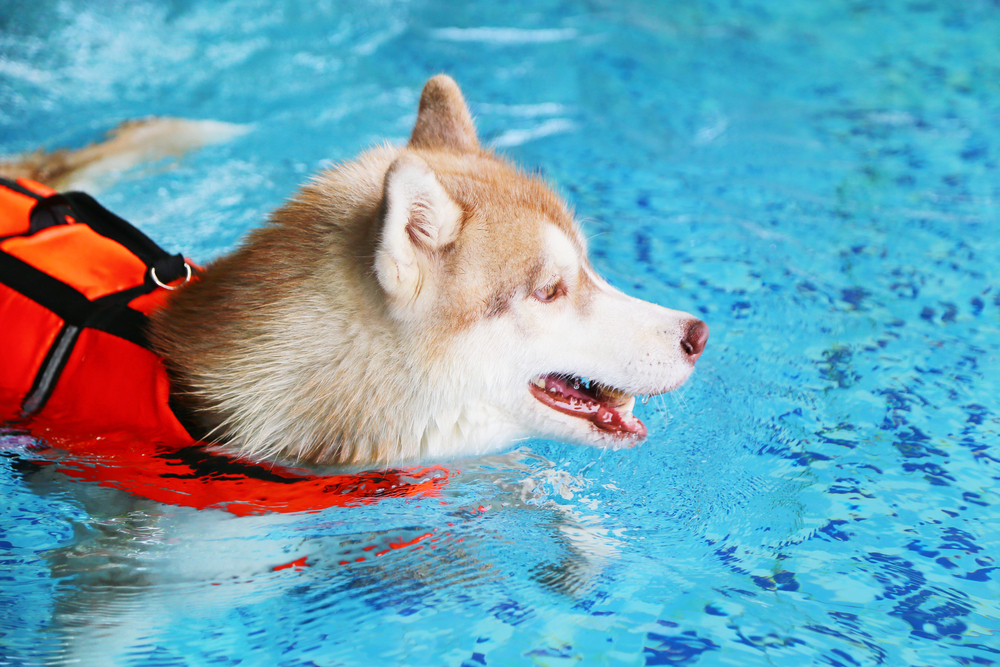Teaching Your Pet to Swim

If you have a pool, you know it is important that your pet know how to swim for safety reasons. If you don’t own a pool, you might not ever think about teaching your pet to swim. Whether you take a family vacation, visit a lake, or visit a friend’s house, ensuring your pet can swim is a smart and safe decision.
With a little bit of effort and these tips from Oakland Veterinary Referral Services, you can give your pet the tools he needs to stay afloat in the water:
Teaching Your Dog to Swim
A lot of pet owners assume dogs have a natural instinct that lets them swim (ever hear of the doggy paddle?), but this is not actually true. Not every dog breed is a natural swimmer. And some dogs need a little more help to be able to safely keep their heads above water.
When teaching your dog to swim, be sure to:
- Start with a life vest: some breeds like bulldogs or dachshunds do not have bodies made for swimming and might always need a life vest
- Stay with your dog at all times: you should never leave your dog unsupervised around the water, even after they graduate from their swimming lessons
- Bring a toy or a ball to encourage your dog to get into the water: some pups might need a little more coaxing in the beginning to conquer their fears
- Go swimming with another dog: teaching your dog to swim might be easier if another dog can show them what they are supposed to be doing
- Start in shallow water: it’s important to give your dog a chance to get used to how the water feels before starting to swim
Teaching Your Cat to Swim
Cats might seem like they’re not interested in most activities, but a lot of felines actually really enjoy the water. You can safely teach a cat to swim with the following steps:
- Carry Your Cat into the Water: Cats might instinctually try to avoid the water, so you will have to carry them in the first few times. Try to keep your back to the water as you are getting into the pool. Once there, keep a hold on your kitty and speak to her in soothing tones so she knows she is safe.
- Let Go of the Cat: Once your cat feels comfortable in the water, you can gently let tthem go and let them see how it feels to swim on their own. Stay close by and show them you are there to help if they need it
- Dry the Fur Thoroughly: Cats seem to hate water because it makes their fur heavy. A good way to combat this is to thoroughly dry them off after swimming.
Note that some cats will never want to be in or near water. As much as it is good to teach every pet to swim, it may not be worth the wounds caused by a terrified cat.
Teaching Your Pet to Swim: Water Safety Tips
Teaching your pet to swim is smart, as are these safety tips to keep your pet safe in or around the water. Dogs are very susceptible to hypothermia in water, so it is important to make sure the water temperature plus the air temperature equals at least 100 degrees Fahrenheit. Our canine companions also have a tendency to swallow a lot of water when swimming, which can lead to water toxicity. To avoid this, try to keep your swim lessons short. If you notice your dog vomiting after swimming, you should visit the veterinarian. Provide plenty of shade and safe drinking water if you are going to be outside near the water for the majority of the day.
As for feline swimmers, never leave them unattended near water. If you are swimming in a lake or a pond, be on the lookout for any potential predators (or prey for your cats). You should keep your cat on a leash to prevent him from running away and getting separated from you.
At Oakland Veterinary Referral Services, it is our mission to give all the pets we see the best veterinary care around. Our specialty services are here when you need a little extra help with your pet’s health. To learn more or to schedule an appointment, call (248) 334‑6877.


